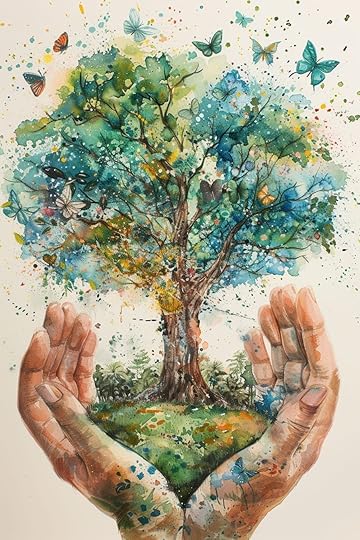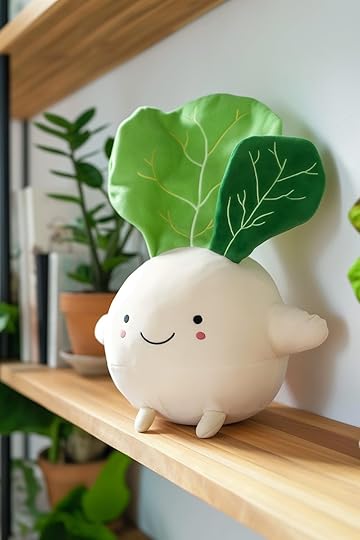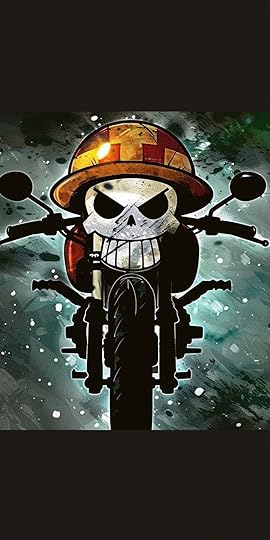Rishad Tobaccowala's Blog, page 8
August 11, 2024
Generosity as a Strategy.

Image by vrayvenus
Generosity as an approach to Life.A CEO shared a story about how a poor family of immigrants stopped to help someone who had a flat tire in bad weather. After the tire was changed, the individual offered money to the family. They turned it down saying “Today it was you. Tomorrow it might be us.”
Sooner or later, everybody finds themselves needing help and depending on acts of generosity. It might be some form of aid, guidance, a person to talk to who will listen, a leg-up or sometimes gently delivered difficult to hear advice.
By being there and helping when someone is in need ensures good “Karma.”
If what goes around comes around it may make sense to send good stuff people’s way.
Generosity makes for a better life for not just the recipient but also to the giver.
Generosity as a differentiator and moat.If strategy is future competitive advantage, generosity is smart for individual or company strategies.
Generosity builds good will which is both an asset and a moat.
It is an asset in that it can be tapped in the future.
It is a moat because when an individual or a company has been generous in times of trouble their employee or customer are less likely to switch to a different firm for a lower price or higher pay.
Generosity is also a key differentiator in that usually when a person or firm needs help there are few people willing to help someone out of power or in trouble. Those individuals and brands who do help stand out and their showing up and helping when others are not burns into the emotional and mental memory of the recipient.
Emotional connections are harder to sever or replace than financial connections.
Generosity as an emotional connector to brand building.A story:
“Long ago, must be 30 years ago or more, I went into Tiffany’s to purchase one cufflink.
The night before I had attended a black-tie event and one cufflink must have worked itself free (it was the solid type, and was difficult to get on and off), and I lost it off my sleeve. Just wasn't there when I got home.
I said to the counter person that I just wanted to buy one cufflink to match the other one.
She left.
She returned with the typical Tiffany's blue box with the white ribbon. "Here you go...no charge," she said.
I couldn't believe it.
You must be -- at least -- the 400th person I have told this story to.”
It is the interaction, the experience and the feeling that truly resonates and builds a Brand.
These are often these are driven by surprise offerings, an over the top experience, an amazing solution to a problem.
Underlying all of these is generosity.
Generosity as Talent and Culture Strategy.Brands today cannot succeed unless their employees are happy. It is the employees who after all provide the service to customers and clients. It is the employees who generate the ideas and solve the problems. It is often the employees who are most believed and can be the greatest ambassadors and advocates of a brand. Often employees are far more authentic ambassadors than a celebrity that companies give tens of millions too. Why not be generous in care, money, and attention to employees?
Culture is not just a place or a history but a way of being and behaving. Great cultures always have some form of generosity whether it is compensation, benefits, forgiveness of mistakes that encourage risk taking and more.
Generosity is a key to brand experiences and brand employees, but it is also a corner stone of brands purpose driven marketing. Smart companies recognize that purpose ensures not just attraction and retention of talent but also that ESG, DEI and other initiatives truly help the company economically.
Generously helping community, environment and others helps the brand.
For these among other reasons it is important to practice generosity.
August 4, 2024
Unleashed. Unfurled. Unbundled.

Art by tulika ladsariya
This is the last of a six part series of why a “company of one mindset” will be critical for career success.
The first five posts covered:
Adopting a Company of One Mindset
3 Keys for a Company of One Mindset.
Future Proofing Careers with a Company of One Mindset.
The Thrills and Perils of a Company of One
The Next Wave : Fractionalized Employees
Observations.a)We are entering a new phase of work where every job is being re-architected due to a combination of AI, changing demographics, new marketplaces, and new mindsets.
b) Knowledge is increasingly becoming free and so knowledge workers will have to change what they do and how they do it.
c) The challenges that companies face about culture post Covid are not only about the difficulty of managing people in distributed workspaces but also because in an age of “de-bossification” it is a fixed mindset of management versus a fixed location that is being rejected and therefore needs to be re-imagined. Old management styles are fading and new leadership styles are emerging.
d)Almost every middle-level to senior manager recognizes in their mind and heart that this is a time of transition in the workplace and are all looking for new signposts, new on ramps and new off ramps as they re-imagine their careers in a transformative time.
e) The future does not fit in the containers of the past and the concept of a “firm” is being re-invented.
A Mantra: Unleashed. Unfurled. Unbundled.In a transformative age it is not companies but people who will transform first.
Waiting for others or delegating one’s future to a firm is very risky.
Every individual regardless of industry, geography, location or company size may want to embrace a mantra of “Unleashed. Unfurled. Unbundled” to quantum jump into the emerging age by letting go of anything that chains their mind and possibilities.
Imagine starting again.
Let us realize that we are unleashed from any physical location and then one decides how much physical location and personal interaction is needed to excel versus trying to figure out how much freedom one can get from five days a week in the office. The steady state is not April 2019 but April 2020.
Many books have been written about how many jobs are mostly “bullshit” and in most companies a majority of time is spent in process and human soap opera drama vs getting work done.
Much of this is going to be swept away with the efficiencies of AI. The focus will be on outcome, output, competitive advantage and each of us will need to decide what are we really good at, what are we passionate about, and what drives us to constantly learn.
A time to unfurl our real selves versus settling or flying our flags at half mast.
Mediocre or medium is what machines will eat for mulch.
As explained in the Fractionalized Employee the full time or five days a week, the full day 9 to 5 career and having one employer will be account for a minority of jobs within three years.
Better get used to thinking of ourselves as modules unbundled from any one particular company or construct but ready to plug and play and manage a portfolio of gigs.
Many of these will be in one company but they will be tasks, gigs, work to be done vs jobs to be filled.
Two Exercises.Exercise One: If you a part of senior management in a company or run a team try this exercise.
Imagine if you could launch your firm all over again with no constraints except the law, the rules of science and the need to make money within three years or less.
How would your firm look today?
It is likely one will come up with something far smaller, far more agile, far more plug and play and far more competitive.
Something unleashed, unfurled and unbundled.
Legacy is for yesterday and while roots of a company in the form of values and provenance matter a lot the reality is that much of what constrains us are not roots but anchors. It is time to take flight and keep some roots but also find wings.
The reality is many entrepreneurs and potential competitors are already doing so and visiting your customers with their new models.
Exercise Two: Imagine we have lost our job and we need to resurrect ourselves.
What would one do?
What companies would we join? Skills we would invest in? Roles we would take? Lifestyles and geography that we would re-imagine?
Imagine the future.
And then in the next few years leveraging the reality one has a job stop imagining it and making it real.
Begin by seeing if you can sculpt, hone and architect your current job or company into the imagined company or job.
Every company, leader and talent has the potential to re-invent.
Let us do it before it is done to us.
It’s time to live the imagined life.
Before it is too late.
It is time to get Unleashed. Unfurled. Unbundled.
July 28, 2024
The Next Wave: Fractionalized Employees.

Image by aryel79 using Mid-Journey
This is the fifth in a six part series of why a “company of one mindset” will be critical for career success.
The first four posts covered:
Adopting a Company of One Mindset
3 Keys for a Company of One Mindset.
Future Proofing Careers with a Company of One Mindset.
The Thrills and Perils of a Company of One
This post makes the case that companies will embrace and encourage a Company of One Mindset because it will be critical for the future of organizational redesign.
Before explaining why this might be so there are two other questions arise which are:
a) Will companies exist?
b) Will jobs exist?
Will Companies Exist?Companies of various sizes will continue to exist both as key drivers of economic growth and the creators of jobs.
The late Ronald Coase of the University of Chicago wrote the firm exists because external friction is greater than internal friction which means whether it is from standing behind a Brand promise, to building and bundling expertise to re-allocating capital it is easier to do it as a firm versus a swarm of individuals.
Over the past two decades much of the external friction has been reduced due to the rise of the Internet and the coming of marketplaces for talent, access to buyers and sellers of anything from computing to finance as a service.
While these changes have significantly reduced external friction it is difficult for any significant product or service from packaged foods to entertainment to pharmaceuticals to chip making to be completely virtual.
However the architecture of companies and how they attract, retain and leverage talent will continue to morph dramatically in the next few years as both capital and labor, management and worker, and employer and talent work to find a mutually profitable win-win scenario.
Keys to this will be
a) focusing on work done versus jobs to be filled.
b) embracing flexibility and rapid re-tooling versus fixed processes and existing knowledge.
Will jobs exist?Jobs as defined by full-time jobs in companies with well defined career ladders are likely to decline significantly as companies begin to prioritize work done, up to date skills needed and flexibility in transformative times.
Next year there will be fewer full time jobs than part time jobs.
And AI might reduce the need for full-time employees as will the need to quickly ramp up and ramp down resources to changing market circumstances.
Smart companies are now considering a new type of role for the future of jobs that combine the cultural strengths and experience of full-time employees with the flexibility of dialing up or down resources and ability to access different expertise of the outsourced worker.
If the worker thinks with a Company of One mindset the company will think with a Fractionalized Employee mindset.
The Fractionalized Employee.Today most companies combine three types of work forces.
1) A full-time employee,
2) A full time or part time contracted employee from another firm (e.g., Wipro or Cap Gemini)
3) Free-lancers (directly or via an intermediate firm)
Full-time employees are usually the backbone of any company and its culture with contracted and free-lancers being mixed in to expand expertise and manage oscillating workloads in a cost-effective manner.
We may now want to think of a fourth type of worker to reflect the forces of technology, shifting demographics and new mindsets: The Fractionalized Employee.
Imagine if one could get both the continuity and loyalty of a long-term employee with the flexibility of cost management of a part time employee and the expertise of a free-lancer and do so in a way that both grows employees and retains them in the long run.
This is the Fractionalized Employee.
Every employee in the company is given a choice to work 100%, 75% or 50% ( or some other percentages of their time.)
They get to select this at the beginning of every year or can adjust to a different level when a life event occurs (health, birth of a child, need to take care of a parent, a passion that needs to be attended to or other life issues).
No longer does an employee have to choose between staying or going or being torn trying to do two things at one time. If they wish to try out a different type of non-competitive job (starting a gaming company –assuming they are not working at a gaming company--or being an artist or writing a book) it behooves their employer from letting them do so because retaining half or three quarters of a talented person is better than zero. As importantly these external skills or vocations will make the employee better rounded and probably more productive. And there will be cost savings from both reduced compensation but also eliminating the friction and cost of severance, re-hiring, and training.
Companies can dial down many peoples jobs by 20 percent for a while versus eliminating jobs completely and losing both talent but negatively impacting culture.
The more an employee thinks with a “Company of One Mindset” the more they are aligned and in-demand and can retain their job in changing times as a “Fractionalized Employee”
And as more folks begin to think with a “Company of One Mindset” wishing to spend some of their time learning, caring for loved ones or pursuing a hobby or passion that might become a career the “Fractionalized employee” probably attract a lot of talent who may want to work a significant amount but not all the time.
Including the more seasoned who might only want to work half their time. As countries grapple with aging and declining populations this is one way to address this issue.
As importantly with a base revenue stream and health care they can decide how to use the percent of time they have bought back or own including building new skills or working as a free-lancer or expert with many new communities of talent. For many people free-lance work alone does not work either because of lack of health care, unstable income, or lack of connection to a community (though there are many new models of communities working to offset these issues).
The Fractionalized Employee model will allow companies to retain talent, grow talent, mix, and match talent in ways that are truly win-win.
The company gets access to cost effective talent and a program to differentiate and attract talent. It has a stronger culture than one with lots of people who do not leave or lots of continuous dependence on free-lancers.
Talent gets to retain income streams and benefits and continuity and community or work while balancing life challenges or other passions and interests.
The compliment to a company of one mindset by talent is a fractionalized employee approach by companies and their synergy will turbo-charge the next generation firms.
July 21, 2024
Thrills and Perils of a Company of One.

Image by adamc88 using Mid-Journey
This is the fourth in a six part series on the importance of having a “Company of One” mindset.
The first three posts covered:
Adopting a Company of One Mindset
3 Keys for a Company of One Mindset.
Future Proofing Careers with a Company of One Mindset.
These posts clearly note that one does not have to be be a company of one but rather to have the mindset to thrive even in a company of thousands.
This post shares some key learnings if and when someone decides to go solo or create a side-hustle or side-gig.

Image by akiller_ratfink using Mid-Journey
It has never been easier to launch a company of one.67 percent of Gen-Z who have a full time job have a side gig or side hustle and within two years more people will work solo than in a company in the US.
Four factors feed this trend:
a) Unbundled and Distributed Work: The future of work for most white collar workers will be a combination of going into the office and working from anywhere with most companies eventually settling into 2 or 3 days in the office. This creates significant opportunity to pursue a second career.
b) Marketplaces: Whether it be Shopify or Etsy or Substack or You-Tube there are deep marketplaces that can support the individual by helping one create, partner, manage and generate revenue working by oneself because it is so easy to plug and play with buyers, suppliers, partners and resources.
c) Technology: AI will benefit individuals as much if not more than companies. Companies are under the mistaken belief that they will capture most of the productivity and efficiency increases brought about by AI. If one steps out of the Boardroom the conversations are very different among those who are now leveraging these tools. While AI will definitely increase productivity at companies it will significantly benefit individuals and smaller companies.
For about 100 dollars a month most individuals can have better and more updated technology than any company because of the declining cost of AI and the rate of change of technology. Most companies tech tend to be six months to a year behind the state of art that the individual can access. And the technology individuals use tend to be twice as good given the leapfrog in capabilities.
For instance most companies try to select a key partner for most technology but an individual can access state of the art from Google, Microsoft, Open AI, Mistral, Anthropic, Adobe, Eleven Labs, Runway ML for less than 20 dollars a month each with no muss or fuss. We can access huge bodies of knowledge which were usually only accessible by world class consulting companies for free or close to free.
If technology is a slingshot that enables David to play at the level of Goliath, AI turbocharges the slingshot into a cross-bow.
d) Accessible and Low Cost Infrastructure: It has never been easier to create a LLC ( a limited liability company) and set up a financial structure and basic legal frameworks. In most cases an investment of $500 to $1000 and two weeks of time is all one needs to launch oneself. The same platforms a huge company uses such as Meta or Google or Amazon or Tik-Tok is available to a company of one through their self serve models.

Image by super_yuming using Mid-Journey
The downsides of being solo or small.Running a company of one alongside your existing job has limited risks as long as one does so with integrity (not competing with ones main job ) and without losing focus ( if one does not deliver on one’s main job one could lose it) .
Deciding to focus primarily on one’s entrepreneurial vision means being exposed to five significant risks.
1. Loss of identity: Many people’s identity are intertwined with their position and the reputation of their company.
2. Loss of community: Colleagues and supplier and partners are significant part of most peoples community and these tend to diminish quickly if one is solo.
3. Loss of benefits: The single biggest benefit loss in the US is that of health care which continues to be tightly intertwined with workplace though the Affordable Care Act and other new resources has alleviated this to a degree.
4. Uncertainty of Income: Not only does one lose income from a job but also the regular frequency of funds entering ones bank account. As a company of one income is highly variable from month to month while expenses tend to be fixed.
5. No cruise control mode: When one is working in a large company one can from time to time slack off due to health or stress or other reasons but clients and other people do not see the impact of this because other people are also working on the project. When one is on one’s own if one does not ship or deliver there is no product or service to sell. One cannot hide in a crowd.

Image by .cosmicfish using Mid-Journey
Ways to mitigate the challenge of a Company of One.The best way to mitigate the challenge of a Company of One is launch it while you have a full time job and/or find ways to remain connected to the company you are leaving in a part time or advisor role if possible.
This solves for loss of identity, community, some loss of benefits and income.
For most people this is not possible today but my research for my next books suggests within three to five years most companies will offer fractionalized employment (half time or more work with full health care benefits and pro-rated equity and bonuses) because of aging and declining populations, the productivity of AI and the need to cost effectively and flexibly access a range of talents.
In the meanwhile here are five ways to minimize the perils:
1. Minimize Costs: There is no reason to spend money on office space or executive assistants or people to help you send out invoices and manage cash flow. Status does not pay the bills. It creates them. Its down and dirty time. The cost of a company of one should be just one individual. Minimizing costs provide a massive amount of optionality and runway.
2. Be Easy to Buy and Try: This is not the time to be very precious about who we work with, how much we charge or what needs to be done. Avoid insisting on minimum contract sizes, cancellation fees, advanced payments or anything that causes friction. First get bought to be sampled. Then the rest happens easily if one does a great job. Solo or small teams live and die on word of mouth so getting trial and over delivering builds a sustained business.
3. Partner Aggressively: Because one is a company of one does not mean one has to work solo. Find ways to plug into larger companies but also partner with other entrepreneurs where your skills can enhance, complement or become part of their full-service offerings. It is remarkable how many people support a company of one if one reaches out.
4. Maximize Optionality: Try to have as many different revenue streams from as many different companies or different services as you can. This enables that cash flow while wavering never goes to zero and no single client or couple of clients or jobs drive your mood and end up controlling you. Being a company of one working for just one or two people is not truly empowering. Get to a place where one can walk away from any job at any time. This way one is likely to persevere because one is not cornered or dependent.
5. Create and maintain a Reputation for Excellence: When we are a company of one we do not have the great halo of a company we may be working for. People are buying us and not a firm. This requires a reputation for excellence and delivery of excellence. Importantly one also has to invest to stay at the state of the art. At least a quarter of one’s time ends up in learning and building new skills to remain relevant and supporting one’s reputation through helping others, networking and creating a marketing presence. It is no longer about just doing great work but investing in making sure that one is capable of doing great work and people know about the great work.

Image by leil 3209 using Mid-Journey
The Thrills of Company of OneWhile there are big risks to a Company of One and it requires significant sacrifices it does lead to four amazing benefits:
1. Control over the product and service: No longer do we have to apologize for something that went wrong in our firm that was done by someone else or struggle to fix the situation. The product and service and buck stops with one person.
2. Unleashed Freedom: Once the business begins to have momentum we can decide who we work with, what work we do and when we do it. If success is freedom to spend time in ways that gives us joy this is far more possible without the drama of bosses and P&L pressures, or clients who can control us or fussy talent that sometimes require the maintenance of high priced orchids.
3. Confidence: Talent is deep everywhere but often talent is made to feel uncertain and insecure. If one succeeds on one’s own it really buttresses ones confidence. In fact often people leave a large company and start their own business and after some success return to a corporation with far more skills and confidence than ever before. Companies will increasing look for people who have shown their ability to have built and enhanced their capabilities in new ways.
4. Future Aligned: By 2026 more people will be working for themselves in many countries then for a company. Changing demographics, completely new mindsets about life/work and amazing technology will turbo-charge smaller companies and companies of one. While there will continue to be many large companies and amazing careers at them, the container of the future of a company will be smaller, faster, more agile and more plug and play.
There will fewer whales (many of them will be slimmed down) and much more plankton.
Being a company of one is not for many people for the reasons shared above but a company of one mindset is something we should all embrace especially if we are mid level or senior in a company because the job disruptions are coming for us first as new era calls for new mindsets and the value of stores of knowledge and many forms of expertise become commodified.
For many people is time to unlearn. To unleash. To unfurl our flags.
Feel the future.
Chase it.
July 14, 2024
Future Proofing Careers.

Photography by Michael Clark
This is the third in a series of why adopting “A Company of One Mindset” can help every individual thrive irrespective of the size of company, location or type of industry one works in.
When one adopts “ A Company of One Mindset” it means incorporating three behaviors which include:
a) Being in charge of your own career by being your own Human Resources and Learning and Development Manager ( in addition to any your company provides.)
b) Building a reputation for GENEROSITY internally and externally that signals expertise, depth of relevant skills and ability to work well with others and most importantly as someone who helps others get ahead versus just being focussed on oneself.
c) Investing in 3 key skills that will continue to matter regardless and in spite of what the next generation of technologies or global shocks might bring.
By being a company of one and focussing on controlling your own career, building a world class reputation buttressed by generosity and honing the skills that will endure regardless of technological upheaval ensures that you will future proof your career.

Photography by Michael Clark
Being in Charge of Our Own Career.Today most people will work for 50 years while most companies last fewer than fifteen.
Even if your company has been around for a hundred years the talent team in any company is focussed on serving the company you work for first versus you. They need to hire to their strategy, retain talent in some areas and exit talent in others, invest in skills the company needs now and for the future which might be not consistent with your career strategy, your continued need for income and different than the skills you need for now and the future.
Human Resource and Learning and Development teams are critical and important and can be a huge benefit to everyone but the individual must decide how to utilize, leverage and strategically incorporate the resources of these teams.
Too many people end up not being prepared when their company downsizes or their career stalls and they find that they do not have the skills that make them marketable and their reputation and network is deeply limited and often over indexing in their own industry which might be in secular decline.
Do not out source your future to your company.
To be in charge of your own career is to have the optionality of leaving your existing company at any time with a high likelihood of improving your position and income.
Paradoxically when you do this you can focus on your job, stay long in your company and even adapt to soap opera drama at work because you know you have options.
And your company by knowing that will also treat you well.

Photography by Michael Clark
Build a Personal Reputation while helping others generously .a) Every individual should Google or ChatGPT themselves )and work to improve the results by developing their own web presence, by being active on social channels, and participate in industry activities ( Many industry events from Cannes to CES to Davos double as networking and personal brand positioning events as much as generating leads and connecting with Clients.)
b) Ask people who lost jobs what they learned and did to get their new job. You are likely to learn that :
1) being good to people who need help when we had a job will help us when we are in need
2) we should not make the mistake of conflating our company and position with our own reputation. People are genuflecting to our role not us , so we need to build our own expertise and brand in addition to the halo of our company.
3) If one focuses only on oneself without building one’s company’s brand or helping others build theirs it will backfire. We work for companies and if we do not keep them in focus they will note it. And our reputation is built on the quality of our work and relationships not just our postings.
c) Begin another career while you are working on an existing career: There are many parallel careers one can run which are not in anyway conflicted with or need to be hidden from your management.
These include writing, teaching, public speaking, advising non-profits or being active in industry or personal passion boards such as art, music and other civil or charitable events.
These help one build skills, create goodwill by helping others and giving back, expose oneself to new people and thinking which can help one’s current job and much more.
Do the things you would do if one lost a job and had to find one.
Don’t wait.
Till it is too late.

Photography by Michael Clark
Investing in three key skills.Five major forces from technology to demographic change to the launch of marketplaces to the rewiring of work due to Covid and the rise of an economy of gig work will impact every job. Just one component of one of these areas, technology, which is AI is likely to impact all our jobs significantly in less than three years.
Regardless of what the future will bring including amazing AI here are key skills to future proof ourselves
a) Communication Skills: Get our company to or invest ourselves in building our writing and speaking skills. We will need to be great writers to differentiate from the adequate writing of AI and when everybody has the same knowledge due to AI our ability to take this knowledge and data and add something more to what the machine emits will be key. Forget learning Mandarin or Coding learn how to hone writing skills and become a great presenter in one’s native language. If the future is AI +HI a big part of HI will be world class communication skills. It can be learned and it will make a difference.
b) Making/Creating/Imagining/Building: Sooner rather than later all knowledge will be free so much of our existing expertise will matter less. Also anything that has to do with allocating, compiling, researching , measuring and computing will be be done 100 X faster and 10X cheaper by technology.
So we should ask how much of our time are we spending making and creating things or asking questions to re-imagine our business and ourselves or building other people or our Clients business versus processing stuff and sitting in meetings watching the same powerpoint updated with new numbers every month!
c) Continuous Re-Invention: The day one believes one is a Master is the day one begins the road to disaster.
A key skill will not just be learning constantly but also unlearning and detaching from some past ways or beliefs. There is no going back but only moving ahead and if you came out of school today would we act and behave the way we do or are we doing what we do because we believe 1)) we will retire before change hits us, 2))we cannot learn new things because they are complicated or 3)) because we do not have time.
We should not sell ourselves short.
Everybody regardless of age can re-invent. The ability to learn is cheap and there are many real world and online resources to tap.
Finally growth and learning is key to life since the day we stop learning is the day we start dying.
Unless we plan to end our career in a year or less we will have to begin future proofing right away whether we like it or not.
July 7, 2024
The 3 Keys: Collaborative. Calm. Connected.

Image by 9400 using Mid-journey
This is the second post in a six part series on helping every professional adopt “ A Company of One Mindset” to ensure one can thrive in their current companies while ensuring optionality in a transforming world.
The first post built the case of for a “Company of One Mindset” and can be read here.
Adopt a Company of One Mindset. by Rishad Tobaccowala
The Future Does Not Fit in the Containers of the Past. Edition 203.
Read on SubstackThis second post covers the 3 keys required for a successful company of one which requires collaboration, calmness and connectedness.
These three behaviors are key to thrive in a company of tens of thousands too!

Image by eradaab using Mid-Journey.
Collaborative.A “Company of One” is a mindset that recognizes that every single individual succeeds only if one is highly collaborative with other people (and soon with AI).
This is true in a large, midsized and small companies.
Collaboration is critical for four reasons.
Complimentary Skill Sets: To get any job done inside an organization or by one self it will require other people to contribute their skills, craft, knowledge and labor to help achieve a goal.
Accessibility: In order to scale one’s talent one needs to plug and play into other other peoples super powers. You want a friendly API to be easy to connect to.
Reputation: When one reaches out for help there is an inclination to reach out to people who are easy to work with. Less the drama and soap opera and deep sighing the more one will find there is demand for one’s skills. It is critical to avoid being labeled “difficult to work with”. People will rather work with “very good and easy to deal with” then “excellent but very difficult.”
Speed: Being collaborative ensures speed. Think of how much friction there is when one is dealing with non-collaborative people. Lots of heat but little light. In the future speed will be even more key.

Image by jakob-anim using Mid-Journey
Connected.To thrive it is critical to be connected.
Connected to and aware of the latest trends in ones field.
Connected to the best tools and technologies that are available.
Connected to the key folks in one’s industry and craft.
Connected to how one’s work drives and is linked to outcomes .
Think about the people you reach out to in your firm or outside it and you will find that you want your key connections to be “connected”.
And connected is a mindset that any person even if they are operating by themselves can engender.
Invest time in learning and being exposed to the key trends in one’s field and take the time and if necessary use one’s own funds to ensure that one is using the latest tools.
Many of the latest tools are very cheap and so do not wait for a company to get them or give them. It is our job to be on the cutting edge so we are not left on the cutting floor.
Read and listen to the the best people in one’s fields. Everyone is accessible everywhere and often for free via You-Tube, podcasts, X, Tik-Tok, LinkedIn and other platforms. Professionals who are passionate about their craft can access and learn from anyone. Leverage everything the Learning and Development teams in your company provide. These are critical people. But if you need more ask for it or go get it on your own.
Connected to outcomes means focusing on the cool shit versus fixating or describing how one’s colon works. A big risk in a company is to confuse process for product or blame the lack of outcomes on some bureaucracy. Clients and the market place do not give a fig if you live in a constipated firm!
Feed the firm some fiber.

Image by Fossil 75 using Mid-Journey
Calm."Freedom is a calm mind."
― Shane Parrish
Think about the co-workers you most cherish.
They are likely to be collaborative.
And they are connected.
But it is also likely that many of them are calm.
Work is drama.
That is a fact that few can argue with.
It is filled with surprises from competition, clients, technology, politics, and a myriad number of forces.
Work is a soap-opera.
Each of us are dramatic players emoting, swooning, falling and resurrecting.
That is human.
But since we are at work and have to deliver results and are not actors or actresses in a soap opera or drama we eventually have to chill and calm down and carry on.
Decisions made under emotional stress tend to often be wrong. So it is best to be calm or seek out people who can help one see clearly and feel calm.
This is true in a company of many but particularly if one is working by oneself since calmness signals confidence.
Calmness means not confusing activity with outcome and not appearing desperate.
Just as banks often do not lend money to the people who most need it the likelihood of being hired when you most need a gig or appear desperate is slim since the buyer wonders what is wrong with us.
So calmness is all.
Net to succeed in a company think like a company of one which is highly collaborative, deeply connected and calm filled.
June 30, 2024
Adopt a Company of One Mindset.

Today, exactly five years ago on June 30, 2019, I ended a wonderful 37 year full-time working career at a 100,000 plus person company (though I am fortunate to continue to work with it in a different way) and began a new career as a company of one.
During the next few weeks, I plan to share my learnings and insights because I have come to believe that, even if one works at company the scale of a Walmart or Amazon, it behooves everyone to have the mindset of a company of one because such a mindset will a) allow one to perform better at a large company, b) ensure a longer career at any company that one loves and admires, c) maximizes options and d) ensures that one is prepared for potential radical changes in the future of work.
My learnings are informed by my own experience, speaking with and observing the experience of others, working with and visiting over 100 companies around the world in the past five years and deep research involved for my next book Rethinking Work.
A Company of One mindset will allow one to stay longer, perform better and be happier at any company from small to midsized to giant while ensuring that one remains relevant and future proofed should one decide to move on or is at the wrong end of a “right sizing” or “delayering” initiative.
Better performance and longer tenure at your current firm while ensuring you are future proofing your career and maximizing your options.
Future posts will cover everything from what, how, when and much more but today is about the “Why a company of one mindset” will be critical.
Why A Company of One Mindset.It is projected that in 2027, 86.5 million people will be freelancing in the United States making 50.1 percent of the population.
A combination of five forces is driving this re-configuring of the workforce:
Aging: In the United States 10,000 people turn 65 every day and many of this group continue to work because they need to so as to make ends meet, or want to for reasons of identity, community, purpose and/or growth but cannot or do not want to work full time for a company. Many firms which are finding it difficult to access certain skills and experience are now becoming far more flexible in their approaches to retaining their seasoned workforce on a part-time basis.
New Mindsets: 76 percent of Gen-Z want to work for themselves and 66% of Gen-Z who hold a full-time job also have a side-gig or side-hustle. In addition, Covid-19 have many people re-framing the question of how life could fit into work ? with how does work fit into a life?
Remote/Hybrid Work: Remote-Hybrid work provides the flexibility to work anywhere for anybody which can enhance opportunities to get work while moving to locations that cost less which allows for more career options.
The Technology powered Gig-Economy: New marketplaces from Fiverr and UpWork to find talent and work, AWS and Open-AI to access technology, Etsy and Shopify to sell and connect to marketplaces, Tik-Tok and Meta to connect and brand, combined with companies need to remain agile is driving more talent and firms to a plug and play workplace.
AI and Blockchain: While AI may not lead to fewer jobs it is going to change the nature of most if not all jobs and the half-life of skills are going to decay considerably faster. Blockchain while out of favor will eventually be seen to be essential to trust in an AI world and will enable more ownership and equity for individuals. Most importantly many of these technologies are now providing super-computing power to everybody who cares to learn, allowing individuals to get all the benefits of scaled companies.
Whether it is finding work post-full time career, working a side-hustle or passion project to make ends meet, building an expertise, creating an off-ramp from a full time job, or filling the gaps between full-time employment at firms which are often trigger-happy in adding and removing talent from their payrolls, the smart professional prepares to be a company of one.
This includes everybody including the CEO’s, EVP’s, SVP’s and not just mid and entry level executives.
a) Your current job is a gig job: Companies are creating internal marketplaces where opportunities can be identified and applied for and teams of experts can form and dissolve around projects like consulting firms and the entertainment industry have long done. This will make leadership evolve from zone of control to zone of influence. And tenure will grow less important while relevant skills and ability to incorporate new ones will grow more important.
b) Managing is not enough: In an age of “de-bossification” increasingly people will ask senior folks what they actually do, make or build which means enhancing ones craft and skills and relevance. Allocating, delegating and monitoring will grow less important.
c) Knowledge is fungible: AI is making knowledge free and anybody who believes years of expertise are going to be a moat will be surprised if one is not building new skills and new expertise.
As a result, for an individual to thrive in a company they will need to learn how to operate as a company of one by being “up to tomorrow” and “market competitive and relevant”.
Every one must become a super person.
A true power of one.
The combined power of the Avengers is because each of the Avengers is powerful on their own and not just because they learn to work as one.
What this series of posts will cover.a) Why a company of one is not about one person or an individual focus but is highly dependent on others and on team work. Why collaboration, reputation and connectedness are key.
b) How to future proof your career and take charge of its navigation with a company of one mindset.
c) The challenges, risks and surprises as well as the fun, flexibility and financial upside a company of one mindset can enable.
d) The steps one can take to become a company of one in a way that is transparent, aligned and supported by your large firm or if you find yourself without a job.
e) Why smart companies and leaders of companies of all sizes but particularly large ones will increasingly encourage a company of one mindset to remain competitive, ensure agility and retain talent. A company of one mindset is great for a company of a million!
Rishad Tobaccowala leverages forty years of global experience across dozens of industries to help leaders and companies thrive in transformative times.
June 24, 2024
Different.

Here are a simple set of three exercises that can be done by anyone, anywhere, and at anytime but will likely leave you seeing, thinking and feeling differently.
1. Making a difference.At the end of every day we might want to ask ourselves:
How are we different today then yesterday?
Did we make a difference to anybody or anything?
What would we have done differently?
The first question is about our growth.
Did we grow today so we are different than yesterday?
The second question is about our impact.
Did we have an effect on somebody or something today so they came away better or different?
The third is about improvement.
What did we learn that make us better tomorrow?
If we ask these questions to ourselves every day ( or every week or every month) it allows us to re-invigorate ourselves even at the end of tough days and in some cases signal we need to change our jobs, relationships or lives if the answers constantly indicate low growth, or limited impact or little learning.
Try the exercise and you may find it eye-opening.
2. What made a difference.We are a sum of the decisions we made, the people we met, the things that happened to us and the chances we took.
In most lives just a handful of decisions, people, events and chances have made all the difference.
Understanding these are a key to a life.
Try answering these:
What 3 key decisions in your life have made all the difference? ( eg. a partner, a job, a decision to leave a place or person)
What 3 people have shaped your life and/or career?
What 3 events good or bad have shaped you ?( eg. health issues, financial windfall, accidents)
What are the 3 biggest chances you took that have determined where you are ? ( eg. risks, betting on people, career re-inventions, moving locations)
In life a handful of decision, events and people determine where you end up.
Often though our lives are changed by other peoples decisions to hire us, help us, partner with us and we need to keep in mind that we have less control often then we might think.
In fact the two biggest drivers of a life are two draws of the lottery which we have no control over.
These are a) who we are born to and b) what country we are born in.
Winning the genetic lottery is often greater than any financial lottery.
One of the benefits of the “what made a difference” exercise is that when we ask others for their key 3 decisions, people, events or chances, we tend to form deeper connections and catalyze more meaningful conversations.
3. A different us.What differentiates us?
One of the most interesting thing is to see people conflate themselves with their trappings.
If you are a senior person in a company is it you or your role, the company reputation or the money you control that people are admiring and genuflecting too?
So many people are shocked that when they leave or lose their position that they are no longer as relevant, sought after, pandered or curtsied to.
There is us the person.
And then there is us the objectified person empowered by another power source ( a company, a budget, a role) that we borrow from.
Important to remember the differences and to realize what will remain that is us after the role or job or position end.
It is a difference that matters a lot.
What makes you different that is uniquely you?
It is usually a combination of a special niche/skill, a voice and true stories that will alway be yours.
To discover yours try this exercise…
Career Turbocharging! by Rishad Tobaccowala
The Future Does Not Fit in the Containers of the Past. Edition 71.
Read on SubstackJune 16, 2024
Expiration Date.

Image by David Rojkowski using Leica iPhone de Lux.
The most important expiration dates are not those on food, subscriptions, insurance policies or medicine.
These dates are known.
Its the expiration dates that are unknown that matter the most.
 Career Expiration.
Career Expiration.‘Every career has a midnight hour. The smart people leave at five to twelve.’
This piece of advice by my friend Sanjay Khosla who ran many large companies over his career really resonated.
Regardless of how good we are, how senior a role we inhabit or how irreplaceable one thinks one is, every career comes to an end.
All is well and then suddenly we find ourselves at midnight hour and the carriage of a career turns into a pumpkin.
The key is to leave before the midnight hour.
This ensures that one avoids being shown the door or shuffled into a reduced role .
The difference between early and late is significant because those who over stay often turn bitter or lose the community or connection that come from colleagues because one has left under a cloud.
These midnight hours occur not just at the end of a career but all through a career.
And they can be felt.
Be particularly wary when one or some combination of the following changes happen:
a) a change in management, b) an acquisition or take-over, c) a sudden change in financial results or d) a shift in technology which creates a strategic review.
When one instinctively feels a change in the force one must pay a lot of attention and ask some combination of the following four questions:
a) How to adapt to the new management?
b) How to adjust to the new culture and power shifts of an acquisition or sale?
c) How to re-think ones skills, approaches and role in the shifts that follow a change in financial result?
d) How to reinvent, learn and change to align with new technology?
If one does not adapt or re-invent or one feels that one cannot work under the new changes then be prepared to find one on the wrong side of the midnight hour and it is better to exit with grace.
Companies do not adapt to employees.
Employees have to adapt to the new realities.
If one is not willing to adapt then get ready to walk.
There is one other time when the midnight hour occurs and this is when one stops growing in a job.
The day one stops growing it means one’s career has started dying and the midnight hour has arrived.

Image by Pepitobobito using MidJourney
Financial Expiration.The underlying basis of much financial planning is based on three unknown expirations:
a) When will you retire?
This number is shifting to much older for most people either because we are living longer, or in some countries pension payments are being pushed out to later years, or because the cost of living has risen forcing one to work longer.
b) When will you stop earning income?
One can continue to make an income after one leaves a full time job though it may be smaller and more variable till one day it stops. Many financial models fail to take this into account.
c) When will you die?
This number is the big unknown but in most countries it is later and later and something that people have not thought about is how a combination of AI and Biotechnology could significantly increase life expectancy due to breakthroughs in medicine.
It is fascinating to understand how many retirement calculations are based on assumptions that may not make sense. For instance the famous 4% rule that one can draw down four percent of ones assets and not run out of money is based on retiring at 65, having no income and living to 95. Even the person who came up with model believes the draw down is too low.
Similarly annuities which pay a fixed sum for the rest of one’s life is a bet by you that you will outlive the calculations of the actuaries at the Insurance companies. And since they have not factored in the impact of AI and Biotech yet it might be a good bet!

Image by Yiplingli42 using Midjourney.
Life Expiration.“The Meaning of Life is that it Ends”
Franz Kafka’s quote above explains why living forever even it it was possible might make life less special since if there was no loss, no last things, no ticking clock, would any day, anything or any moment be particularly special?
If one knew how many years one had left would we not live very differently than we do today?
Anyone given a bad health diagnosis usually changes the way they live because they become particularly aware of time.
But most of us can determine the time we have left if we want to.
Globally life expectancy is 73 years and in the US it is 78 years.
So assume 75 years of healthy life.
Subtract your age from 75 and multiply it by 365 days and that is what is left.
Most people are surprised how few they are.
Someone at 55 has just over 7000 days left.
At 65 its a little over 3500…
Keep that in mind next time someone does not take your time seriously.
June 9, 2024
All Free. All on One Page. All Yours.

This is the 200th edition of “The Future Does Not Fit in the Containers of the Past.”
Over the course of 200 Sundays in a row (nearly four years) 250,000 words of writing (the equivalent of five books) accompanied by the work of a talented painter, sculptor, photographer have been published at rishad.substack.com.
The writing has attempted to be bohemian, shifting across a range of subjects in the belief that in an age of “full-stack leaders” and “vertically or horizontally integrated business models” there may be space for some full spectrum thinking and writing that combines strategy and poetry, technology and art, change and what does not change, roots and wings, business goals and personal ambition, and the many other dualities and complexities that cannot be simplified into a tweet or a silver-bullet solution.
The writing has kept away from the news, politics and the memes of the moment and therefore has stayed evergreen. A piece from four years ago is probably as relevant as it is today.
Finally, everything has been written by one human, remained algorithm free and completely non-monetized with no advertising sales, subscription fees, affiliate marketing or data harvesting.
Regardless, every post has been written, edited and honed with great care ( 3 to 4 hours of writing each week distilling half a century of learning for a six minute piece) since it needs to reward you the reader for your most valuable asset.
Time.
Today nearly 30,000 people spend six minutes a week reading this thought-letter.
That is 180,000 minutes or 3000 hours of time every week.
For the ROI hungry…I write 3 hours a week and get 3000 hours of attention a week which is an ROI of 1000…
It is not just the time but the goodwill generated too.
Thank you reader.
And here is another thank you:
A One Page Distillation.
As some of you may be aware at the request of many readers who like to revisit certain pieces to use for their work or forward to others ( bosses, colleagues, children) I have created a single page where the best pieces and have organized them into a dozen areas for easy access and reference ( much faster than any chatbot or search engine which I have tried to program).
Here is where you can find the one page ( please book mark or note the address as it is a hidden page on my website):
https://rishadtobaccowala.com/100
These 12 different subject areas include those helpful for work such as:
a) Future Thinking and Strategy
b) Managing Change so it Sucks Less
c) Upgrading our Mental Operating System
d) Building Great Cultures
But also sections helpful for the individual such as:
a) Enhancing Effectiveness
b) Selling Better
c) Managing Careers
Or pieces about life, living, losing, love, literary pursuits, philosophy, poetry and joy and can be found in the following sections:
a) Personal Growth
b) Wisdom
All the writing is not only free but it can be sampled, copied, used, fed into transformers or leveraged in anyway the reader wants without any royalty or fee or even attribution.
Because the joy I get from writing and giving is all the getting that is needed.
Thank you again for supporting 200 weeks of writing with your time.



